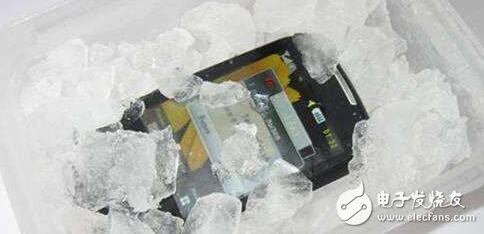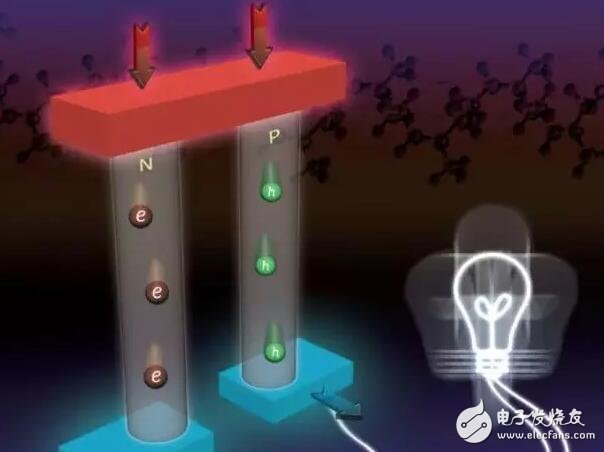In the 1970s, a man named Gordon Moore made predictions about his sense of the semiconductor industry, doubling the performance of the chip every 18 months. This prediction has proved itself correct in the past 40 years, and the density of transistors in the chip has doubled, doubled, and doubled.
For those who are familiar with the chip, high performance is usually associated with this high fever. As we become more dependent on electronic products, the heating problems of mobile phones, tablets, laptops, etc. not only have a negative impact on the experience, but also hinder Manufacturers have designed new products that are more aesthetically pleasing and lighter.
To solve the heating problem of electronic products, especially microelectronic devices, we must first understand the root cause of these heat generation. And this answer may be hidden in Dr. Liao Yulin's latest paper. The former Sichuan Provincial College Entrance Examination Master, from Professor Chen Gang, received his Ph.D. from the Massachusetts Institute of Technology this year.
His research team accurately measured the interaction between electrons and phonons, and the results not only explained the cause of heat generation in microelectronic devices, but also used to further improve the performance of thermoelectric materials.

With the development of semiconductor chips, more and more transistors are being inserted into smaller and smaller spaces. MIT engineers have recently discovered that other electronic devices, such as mobile phones and laptops, are hot, mainly due to the interaction of electrons with phonons carrying heat.
Such interactions were once ignored by scientists, but the latest research shows that in microelectronics, this interaction has a major impact on heat dissipation. The relevant research results were published in the October 12th issue of Nature. On CommunicaTIon.
In the experiment, the team measured the interaction of electrons and phonons in an ultra-thin silicon film using precisely timed laser pulses. The measurement results show that as the electron concentration in the film increases, more phonons will be difficult to dissipate due to scattering by electrons.
Dr. Liao Yulin, who graduated from the Massachusetts Institute of Technology (MIT), is the first author of the paper. He said: "When the computer is running, it generates heat. You definitely want this heat to be quickly dissipated (taken away by the phonograph). However, if When phonons are scattered by electrons, their heat dissipation effect will be worse. As the chip becomes smaller and smaller, this problem must be solved."
But there is a disadvantage in everything, and there must be a benefit. The same phenomenon will bring benefits to thermoelectric power generation. Thermoelectric materials can directly convert thermal energy into electrical energy. The more phonons that are scattered, the less heat is lost, which greatly increases the efficiency and performance of thermoelectric devices.
Thermoelectric materials have a very wide range of applications, including thermal detectors and NASA's latest nuclear battery for space exploration equipment.

The phenomenon that phonons are scattered by electrons is not a new discovery, but it has long been ignored by scientists. With the continuous development of semiconductor technology, the concentration of electrons has become higher and higher, and this phenomenon cannot be ignored.
Scientists must think about how to manipulate electron-phonon interactions in order to increase the efficiency of thermoelectric devices on the one hand and to prevent microelectronic devices from becoming hot on the other.
The other authors of this paper are from MIT, including Liao Yulin's Ph.D. and Professor Chen Gang, Director of the Department of Mechanical Engineering at MIT.
Phonon and electronic bumper car games
Whether in a transistor (semiconductor material such as silicon) or a wire (conductor material such as copper), electrons are the main medium of current motion. The reason why resistors exist, the main reason is that the electrons will encounter roadblocks when they flow. The phonons carrying heat will collide with the electrons and eject them outside the path of the current.
Scientists have long studied the effects of electron-phonon interactions, but the focus is on electrons, without paying too much attention to how this interaction affects phonons.
“Scientists rarely study the effects of this interaction on phonons because they think this effect is not important,†said Liao Yulin. “But Newton’s third law tells us that each force has a reaction. It’s just that we don’t know what The reaction will become important in the situation."

Scattering, heat dissipation is difficult
According to previous calculations by Liao Yulin and colleagues, when the electron concentration exceeds 1019 per cubic centimeter, the interaction of electrons and phonons in silicon (the most commonly used material for semiconductor materials) can have a huge scattering effect on phonons. When the electron concentration reaches 1021 per cubic centimeter, the heat dissipation capacity of the material will be reduced by 50% due to the scattering of phonons.
"This is a very significant effect, but many people are suspicious of this," Liao Yulin said.
This is mainly because in experiments where high concentrations of electronic materials were used before, scientists assumed that the decline in heat dissipation was not due to electron-phonon interactions but to defects in materials.
These defects exist because people dope the material. For example, in the case of silicon, phosphorus and boron are commonly used doping atoms in order to increase the electron concentration of the material.
Therefore, to verify Liao Yulin's theory, it is necessary to separate the effects of electron-phonon interactions and defects on heat dissipation. The specific implementation method is to increase the concentration of electrons in the material, but cannot introduce any defects.
The research team developed a technique called "three-pulse photoacous spectroscopy" that optically increases the concentration of electrons in a silicon crystal film and measures the generation of phonons in the material. Any impact.
This technique is an extension of the traditional two-pulse photoacous spectroscopy. In the traditional method, scientists accurately control the two lasers with precise timing. The first beam produces phonon pulses in the material and the second beam measures the scattering or attenuation of the phonon pulses.
Liao Yulin introduced a third laser so that the electron concentration in the silicon material can be accurately increased without introducing any defects. After the third laser beam was emitted, the measurement showed that the phonon pulse decay time was significantly shortened, indicating that the electron concentration increased the phonon scattering and suppressed its activity.

The experimental results show that the introduction of the third laser will shorten the decay time of the phonon pulse. The higher the intensity of the laser (the higher the concentration of electrons), the shorter the decay time of the phonon pulse.
This result made the Liao Yulin team very excited, because it fits well with their previous calculations.
“We can now confirm that the effect is really obvious, and we confirmed it in the experiment,†said Liao Yulin. “This is the first experiment that can directly detect the effects of electron-phonon interactions on phonons.â€
Interestingly, the concentration of 1019 electrons per cubic centimeter is lower than some existing transistors. In other words, the newly discovered phenomenon is one of the culprit of some existing microelectronics.
"According to our research, as the size of the circuit gets smaller, this effect will become more and more important," said Liao Yulin. "We must seriously consider this effect and study how to use or avoid the impact."
Sky Curtain
Sky Curtain,Led Grille Screen,High Resolution Display Screen,Led Grille Screen
Kindwin Technology (H.K.) Limited , https://www.ktl-led.com